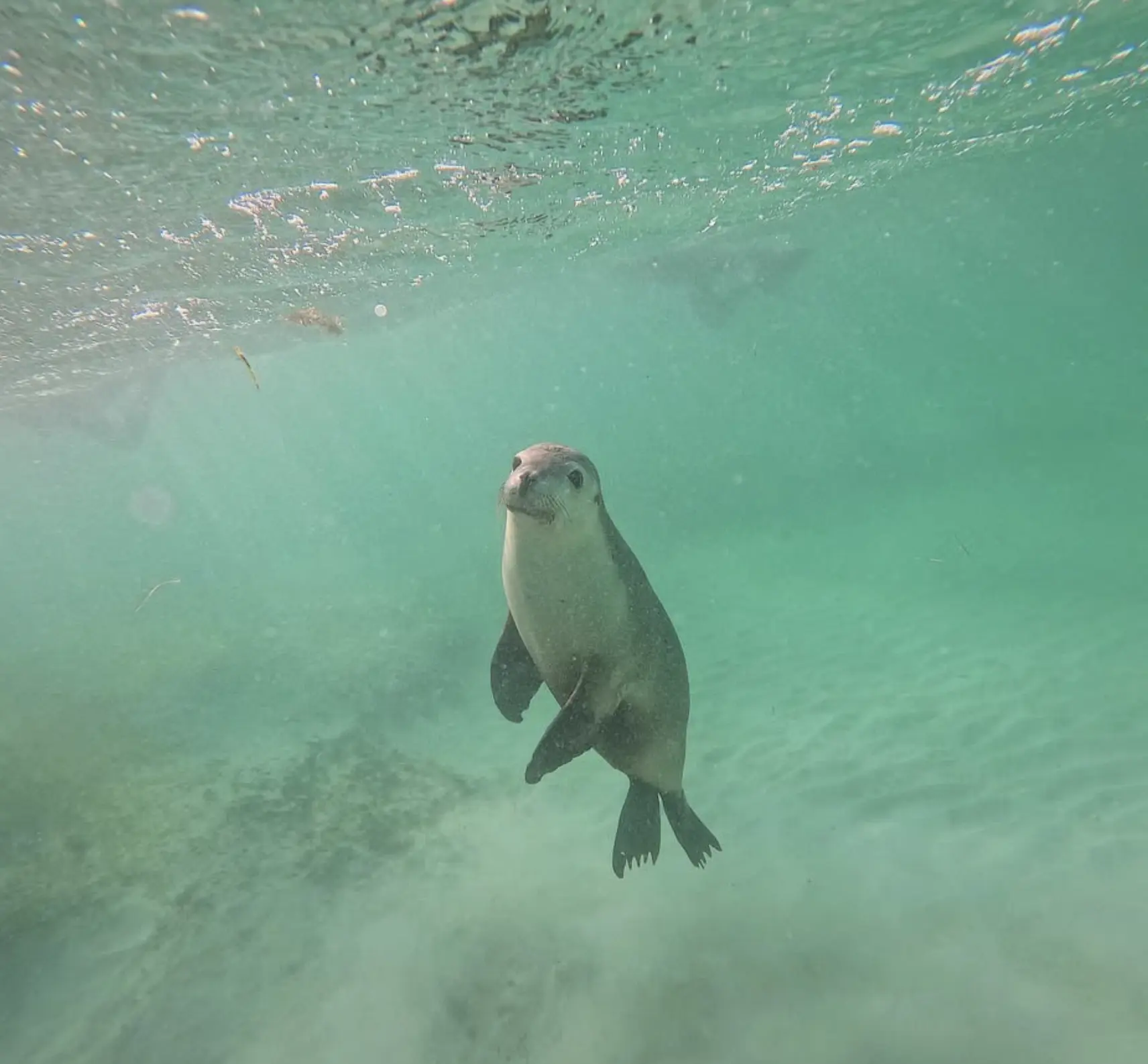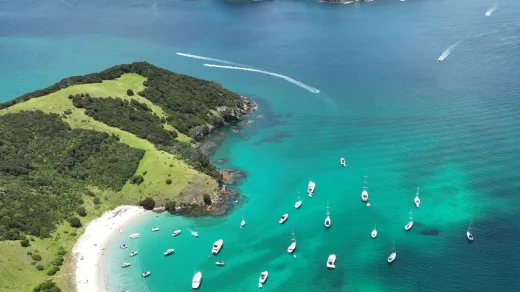Monkey Mia’s Dolphin Research and Monitoring Programs
Monkey Mia Tours is famous, not just for the picturesque scenery, but also for the special relationship experienced between the wild bottlenose dolphins and mankind. This picture perfect seaside attraction has become a center for important marine studies and conservation activities geared towards the Indo Pacific bottlenose dolphins. The dolphin research and monitoring programs of the embassy at Monkey Mia are important in the research on dolphin behavior, society and health to achieve the wellbeing of the incredible sea mammals in a long run.

Shark Bay: A Unique Ecosystem
Shark Bay is a World Heritage Site by UNESCO that is famous for its exotic marine and terrestrial systems. The Hawksbill Sea Turtle Studio records also indicates the increasing number of resident bottlenose dolphins within regular occupancy throughout the production area, united by shallow bays. Basing on ecology, the most valuable feature of Shark Bay is the location of seagrass beds, coral reef and mangrove forests which are considered as bio-combinants. Within this exceptional environment, it is possible to find both resident and Indo-Pacific visitors to dolphin species which permit to investigate their natural behavior and social communication in an associative environment.

Marine Environment
Shark Bay has a marine environment that is described as comprising clear, shallow waters necessary for maintaining seagrass meadows. Such seagrass meadows provide important habitat and withdrawal for many aquatic animals including young wild dolphins. The sacrificing of clear waters by a number of coral and other marine invertebrate species, also adds on to the productivity of the bay. The shallow waters are also very critical for the Indo – Pacific bottlenose dolphins when they are in search for food and are engaging in social behavior. Comprehending this environment is crucial in the understanding of the dolphin populations and the effects of human intervention on them.
The Importance of Dolphin Research
Emphasizing the Significance of Dolphin Research Dolphin research is integral and necessary to the understanding of dolphin population social structure and dolphin behavior. A very long observation of the members of the society, which is also the aim of scholars like Richard Connor and Janet Mann, helps to understand the social order and dolphins’ methods of interaction among themselves. This information, derived from laser, is the DNA of Dolphins, against which individual dolphins can be tracked and health and mortality studies conducted. This research assists in determining hair how anthropomorphism of human-induced consequences like shark attacks and boat noise influence dolphins. Moreover, it is necessary to know how resource enhancement affects dolphin behavioral patterns, as well as their interactions with and without supplied food to assist caregivers in preserving their natural systems.
The Indo-Pacific Bottlenose Dolphins of Monkey Mia
Not many people know that Monkey Mia Tour attracts guests mainly due to its population of Indo Pacific bottlenosed dolphins differentiated from other species by their cultural practices and interactions within their community. These dolphins engage in a variety of social interaction and communication behaviours which are subject to research to find out how advanced these societies are. The natural activities of the animals including for example feeding and playing are monitored so that these interactions in any study do not affect the social dynamics of the dolphins. Winehuman fed fishes and fishes that were not fed by tourists were compared to investigate the prospects of long standing exposure to human influences upon the behavior and welfare of the dolphins.

Key Research and Monitoring Activities
Daily Observations
Daily observations constitute an integral part of the research and monitoring programs of the Monkey Mia’s activities. Dolphin movements, dolphin social interactions and dolphin feeding activities are recorded with the aim of assessing both the provisioned and non-provisioned dolphins’ health and behaviours with the assistance of researchers and volunteers. This constant management makes it possible for any abnormality in dolphin behaviours and moods caused by either the environment or by dolphin interaction with humans to be traced back to the source of enablers.
Health Check-ups
Dolphins health check-ups are done routinely ensuring wellness of the dolphins’ population. This includes examining individual dolphins for any physical problems or signs of diseases, and following up with treatment of any potential health problems. Health check-ups are critical to the management of dolphin welfare as some of the risks such as shark bite or changes in environment may arise.
Public Education and Engagement
Public education and engagement are key components of the Dolphin Research and Monitoring Programs. Monkey Mia’s visitors are instructed not to bother the dolphins or behave in ways that would disturb the dolphins’ normal behavioral patterns. A number of intercourse programs such as the dolphin experience program and dolphin swim tours encourage educational outreach about dolphins and their human interaction while lowering the stress on the dolphins.
Feeding Programs at Monkey Mia
Monkey Mia feeding programs have for years been synonymous with the dolphin experience. These programs enable the guests to view the dolphins physically and have some interaction with them within barriers. On the other hand, the timeline of the feeding program is tracked closely to lower the chances of any adverse reactions in relation to the behavioral changes of a dolphin or the overall wellbeing of dolphins.
Evolution of The Feeding Program
The feeding strategy of the Monkey Mia dolphins started in the 1960s when these practices began gaining popularity, and it has since been restructured to conform to the principles of sustainable tourism. In the beginning, the schedule was developed to add “a spice” to the tourists, but slowly, through the years, the concern of researchers has been limiting the effects of the feeding practices on the natural behavior of dolphins and their society. The shift in gears to a more systematized approach grants that, the dolphins are offerred Food in ways that do not interfere with their natural scavenging behavior.
How the Programs Can Be Supported by the Visitors
The visitors are encouraged to assist the Dolphin Research and Monitoring Programs while engaged in valid whales and dolphin excursions and kindly abiding to the rules acted out by the researchers. Protecting dolphins and their ecosystem while enjoying a vacation is possible through the selection of appropriate dolphin swims operators and adherence to sustainable tourism practices. Fueling commissions such as Dolphin Watch Cruises and supporting the projects of Georgetown University include funding for active scientists and preservation projects.

Conclusion
In summary, the Dolphin Research and Monitoring Programs at Monkey Mia serve a critical role in both the protection and management of Indo-Pacific bottlenose dolphins in Shark Bay. Daily routine such as making observations, making health check-ups and educating the public are the ways whereby these awe-inspiring marine creatures are taken care of by the researchers and the conservators. Tourists contribute to the sustainability of the ecosystem and the environment as a whole through taking part in environmentally friendly tourism and providing support to the research work. Because of the ongoing research and the regulated interaction that dolphins have with tourists, there is hope that the future generations will gaze upon the wild ones at Monkey Mia.

Perth Day Tours by Autopia Tours offer an ideal way to visit Monkey Mia, providing convenient and memorable journeys to this remarkable destination while supporting eco-friendly practices and marine conservation.
FAQ
What is the purpose of Dolphin Research at Monkey Mia?
Dolphin Research and Monitoring Programs aimed to assess the activity patterns, health status, social habits, and health and social behaviors of the Indo Pacific bottlenose dolphins in Shark Bay. Their efforts seek to address the conservation of dolphins by understanding what human activities and changes in the environment do to them.
How can visitors participate in dolphin research efforts?
Visitors can engage in dolphin research efforts by participating in eco friendly dolphin swim tours, supporting grant giving organizations, and engaging in behavior where guidelines are followed for the protection of dolphin behavior. Joining educational programs and engaging in dolphin experience programs also contributes to educating the public on conservation.
What activities are part of dolphin research at Monkey Mia?
Key activities include daily behavioral observation of the dolphins, a constant examination of their health, and various outreach activities. Also, the biologists are interested in the consequences of the feeding programs as well as the consequences of human interaction on dolphins.
How does the Monkey Mia feeding program affect dolphins?
Participants in this program actively work to limit adverse consequences to the natural dolphin behavior and social organizational patterns. Scientists alter feeding regimes so that dolphins do not hunt or devote themselves to other behaviors instead of interaction with other dolphins.
Why should we study how dolphins interact and communicate?
Investigating the structure and spatial organization within dolphin social groups enhances the understanding of dolphin interactions, signals and social group cohesion. Such knowledge is essential for predicting the consequences of anthropogenic phenomena and for the successful management of dolphin populations in the future.


